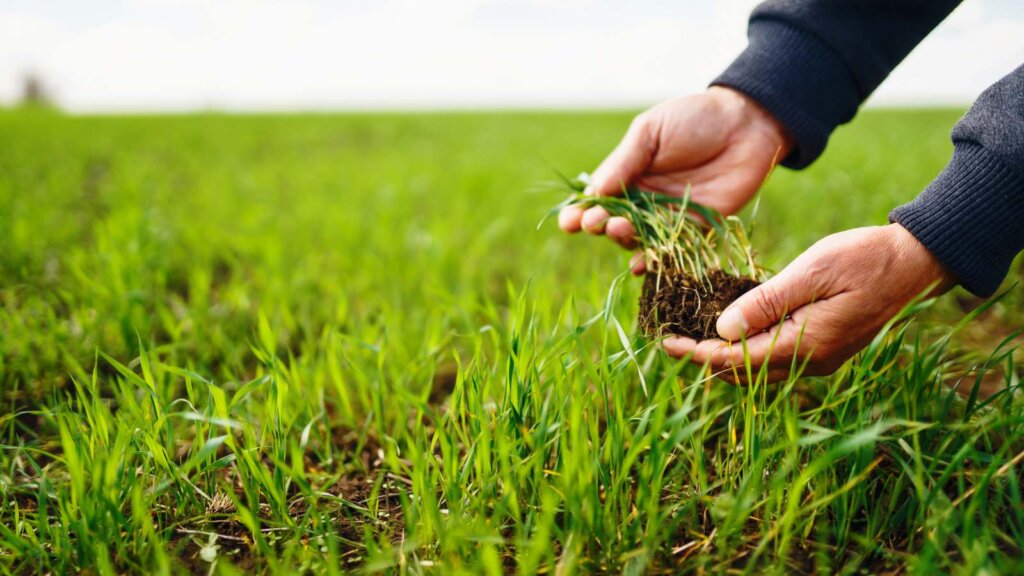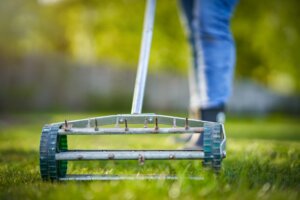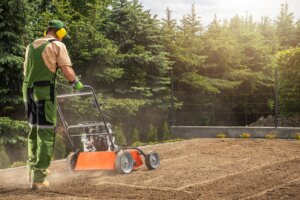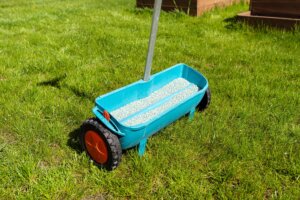Figuring out how much grass seed you need shouldn’t be a guessing game. Whether you’re starting a new lawn or thickening up an existing one, the right seeding rate can mean the difference between a patchy yard and a lush, green lawn.
In this guide, we break it down using clear numbers, helpful advice, and answers to common questions—all tailored to Pennsylvania homeowners.
Know Your Lawn: Start with Square Footage

To figure out how much grass seed you need, first measure the area you plan to seed in square feet (sq ft). Most lawns can be broken into rectangles:
Lawn Area (sq ft) = Length × Width
Once you know your total square footage, you can calculate how many pounds of seed are required based on your grass type and planting goals.
Seeding Rates by Grass Type
Seeding rates are usually listed in pounds of grass seed per 1,000 sq ft. Here’s a breakdown by grass type:
| Grass Type | New Lawn (lbs per 1,000 sq ft) | Overseeding (lbs per 1,000 sq ft) |
|---|---|---|
| Kentucky Bluegrass | 2–3 | 1–1.5 |
| Perennial Ryegrass | 5–6 | 3–4 |
| Tall Fescue | 6–8 | 4–5 |
New lawns need about twice as much seed as overseeding an existing lawn.
How to Calculate How Much Seed Is Needed
Once you know your square footage and your seeding rate, plug the numbers into this formula:
Seed Needed (lbs) = (Total sq ft × Rate per 1,000 sq ft) ÷ 1,000
Example: Let’s say your yard is 5,000 sq ft and you’re using perennial ryegrass at 6 lbs per 1,000 sq ft.
Seed Needed = (5,000 × 6) ÷ 1,000 = 30 lbs
So you’d need 30 lbs of grass seed.
Grass Seed Calculator
Please enter a valid positive number for square footage.
Please enter a valid positive number for seeding rate.
You will need approximately: lbs of grass seed.
New Lawn vs. Overseeding
- New Lawn: You’re covering bare ground. Use higher seeding rates to establish a dense, uniform turf.
- Overseeding: You’re working with existing grass. Use lower rates to avoid overcrowding and encourage strong blending.
Cool Season Grasses vs. Warm Season Grasses
In Pennsylvania’s cooler temperatures, you’ll want to stick with cool-season grasses:
- Kentucky Bluegrass (slower to germinate, soft and dense).
- Perennial Ryegrass (fast germination, great for quick results).
- Tall Fescue (deep-rooted, drought-resistant).
Warm-season grasses—like Bermuda, St. Augustine, and Zoysia—thrive in the Southern US but aren’t ideal for most Pennsylvania lawns.
Grass Seed Quality: Know Your Pure Live Seed (PLS)
Always check the Pure Live Seed (PLS) on your grass seed bag. Calculating the price of PLS tells you how much of the bag will actually grow. If your seed is 80% PLS and you need 20 lbs of viable seed:
Seed to Buy = 20 lbs ÷ 0.80 = 25 lbs
Soil Prep: Don’t Skip This Step
For good germination, you need solid seed-to-soil contact:
- Remove debris, weeds, and bare spots.
- Loosen bare soil with a rake or tiller.
- Add a layer of compost or topsoil if needed.
- Apply seed with a spreader for even grass seed coverage.
- Lightly rake and water the area.
Can You Use Too Much Seed?
Yes. Applying too much seed can cause overcrowding, poor airflow, disease, and weak turf. More isn’t better.
For bare lawn areas, stay on the higher end of the rate. For overseeding, use only what's recommended to avoid choking out existing grass.
Additional Tips
- Seed per season: The Best time to seed cool-season grasses is early fall or spring.
- Bag coverage: Most seed bags list coverage on the label based on per 1,000 sq ft.
- Germination times: Expect 5–10 days for ryegrass, 10–14 days for fescue, and up to 21 days for bluegrass.
- Fertilizer use: Pair your seed with a starter fertilizer for better early growth.
Final Takeaways
- Always measure your square footage before buying seed.
- Choose a grass type that matches your climate and yard needs.
- Use the right seeding rate—more is not always better.
- Prep your soil to improve germination and reduce waste.
- Understand whether you’re seeding bare ground or overseeding an existing lawn.
Need local lawn care support?
Reach out to Terra Lawn Care for expert help tailored to Pennsylvania's growing conditions.



